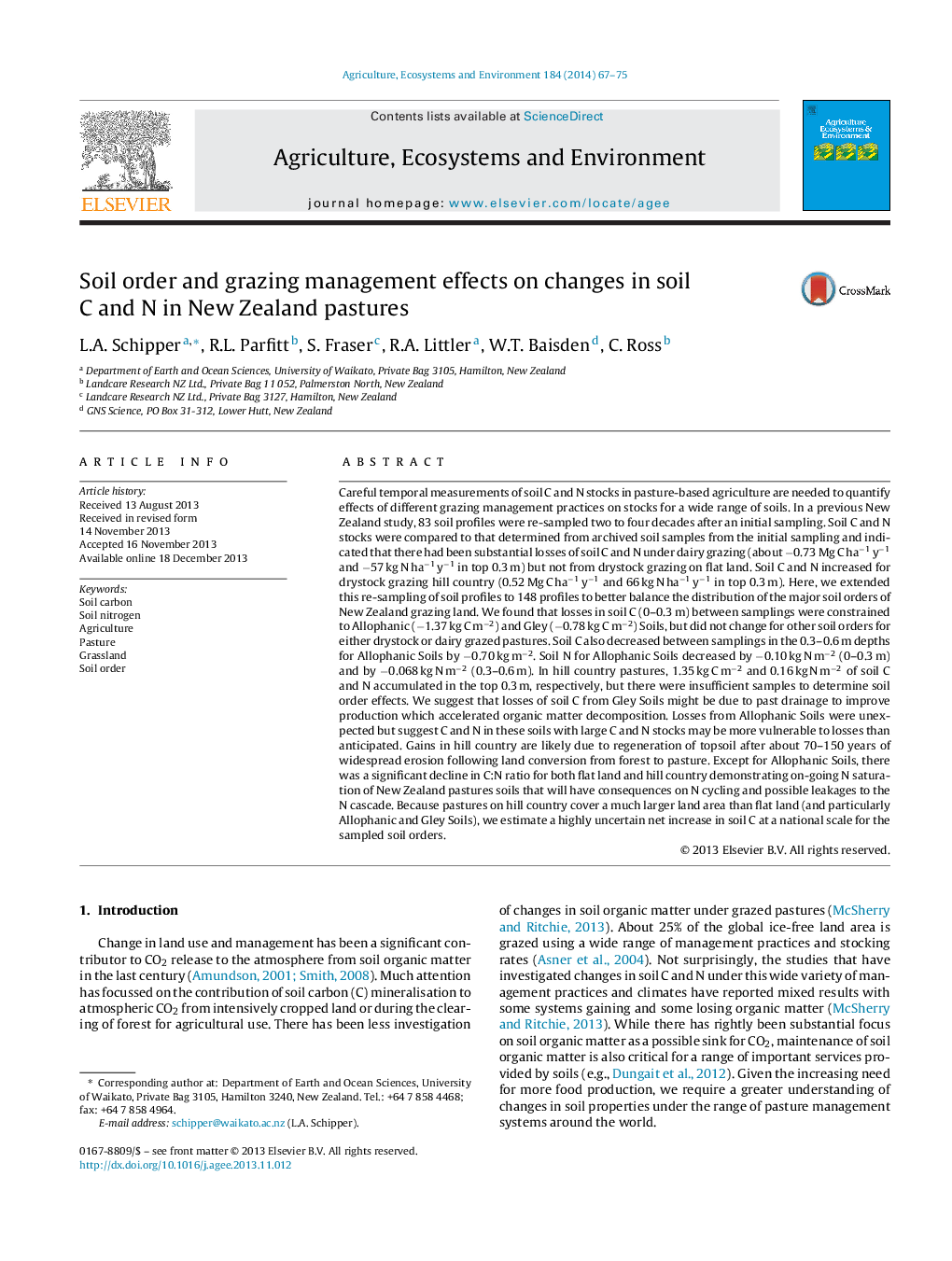| Article ID | Journal | Published Year | Pages | File Type |
|---|---|---|---|---|
| 8487950 | Agriculture, Ecosystems & Environment | 2014 | 9 Pages |
Abstract
Careful temporal measurements of soil C and N stocks in pasture-based agriculture are needed to quantify effects of different grazing management practices on stocks for a wide range of soils. In a previous New Zealand study, 83 soil profiles were re-sampled two to four decades after an initial sampling. Soil C and N stocks were compared to that determined from archived soil samples from the initial sampling and indicated that there had been substantial losses of soil C and N under dairy grazing (about â0.73 Mg C haâ1 yâ1 and â57 kg N haâ1 yâ1 in top 0.3 m) but not from drystock grazing on flat land. Soil C and N increased for drystock grazing hill country (0.52 Mg C haâ1 yâ1 and 66 kg N haâ1 yâ1 in top 0.3 m). Here, we extended this re-sampling of soil profiles to 148 profiles to better balance the distribution of the major soil orders of New Zealand grazing land. We found that losses in soil C (0-0.3 m) between samplings were constrained to Allophanic (â1.37 kg C mâ2) and Gley (â0.78 kg C mâ2) Soils, but did not change for other soil orders for either drystock or dairy grazed pastures. Soil C also decreased between samplings in the 0.3-0.6 m depths for Allophanic Soils by â0.70 kg mâ2. Soil N for Allophanic Soils decreased by â0.10 kg N mâ2 (0-0.3 m) and by â0.068 kg N mâ2 (0.3-0.6 m). In hill country pastures, 1.35 kg C mâ2 and 0.16 kg N mâ2 of soil C and N accumulated in the top 0.3 m, respectively, but there were insufficient samples to determine soil order effects. We suggest that losses of soil C from Gley Soils might be due to past drainage to improve production which accelerated organic matter decomposition. Losses from Allophanic Soils were unexpected but suggest C and N in these soils with large C and N stocks may be more vulnerable to losses than anticipated. Gains in hill country are likely due to regeneration of topsoil after about 70-150 years of widespread erosion following land conversion from forest to pasture. Except for Allophanic Soils, there was a significant decline in C:N ratio for both flat land and hill country demonstrating on-going N saturation of New Zealand pastures soils that will have consequences on N cycling and possible leakages to the N cascade. Because pastures on hill country cover a much larger land area than flat land (and particularly Allophanic and Gley Soils), we estimate a highly uncertain net increase in soil C at a national scale for the sampled soil orders.
Related Topics
Life Sciences
Agricultural and Biological Sciences
Agronomy and Crop Science
Authors
L.A. Schipper, R.L. Parfitt, S. Fraser, R.A. Littler, W.T. Baisden, C. Ross,
